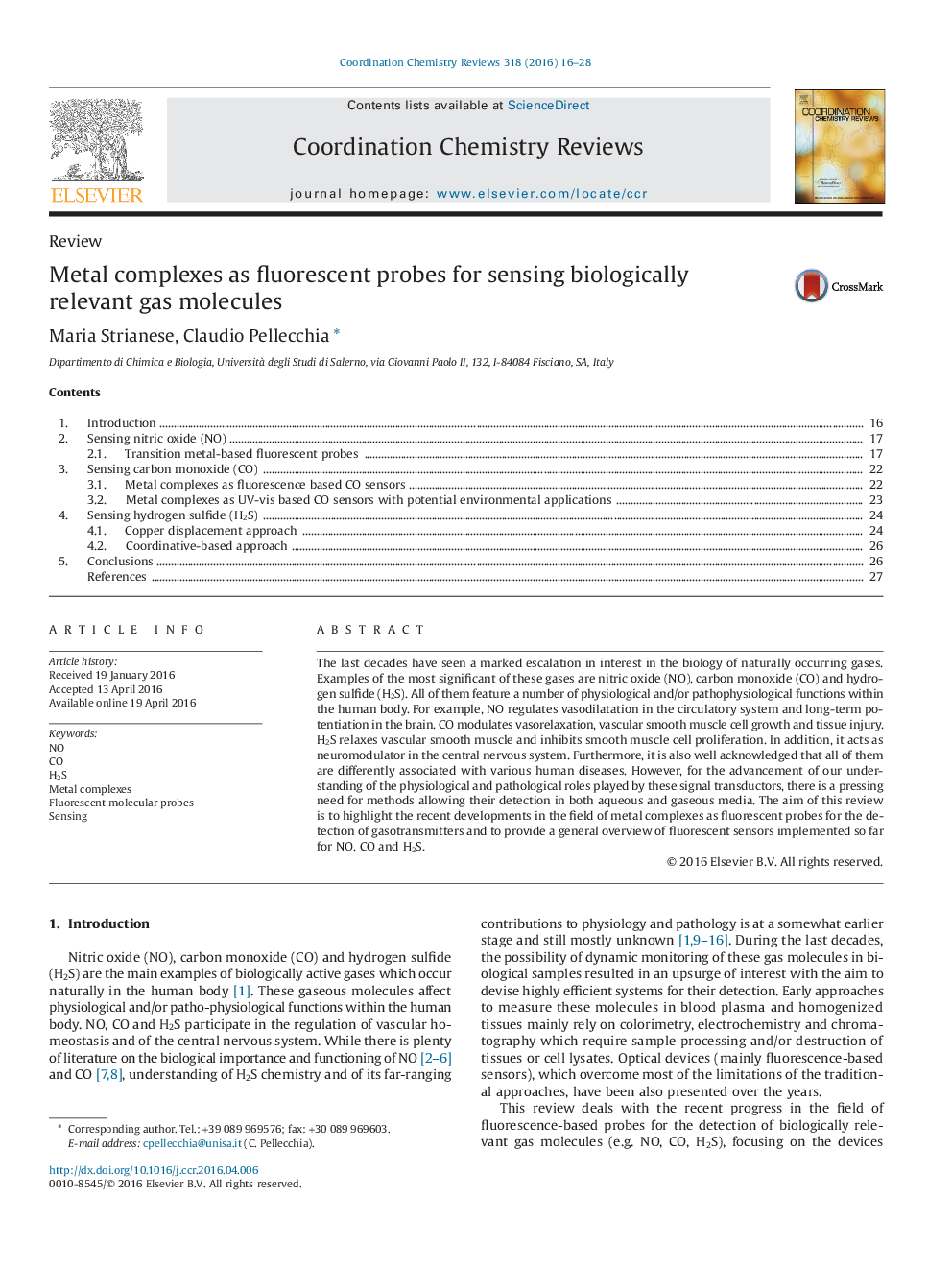| کد مقاله | کد نشریه | سال انتشار | مقاله انگلیسی | نسخه تمام متن |
|---|---|---|---|---|
| 1299034 | 1498708 | 2016 | 13 صفحه PDF | دانلود رایگان |
• NO, CO and H2S are the main examples of biologically relevant gas molecules.
• Metal complexes can act as molecular beacons for detection of NO, CO, H2S.
• Fluorescence is the dominant analytical approach in most sensors reported in the literature.
The last decades have seen a marked escalation in interest in the biology of naturally occurring gases. Examples of the most significant of these gases are nitric oxide (NO), carbon monoxide (CO) and hydrogen sulfide (H2S). All of them feature a number of physiological and/or pathophysiological functions within the human body. For example, NO regulates vasodilatation in the circulatory system and long-term potentiation in the brain. CO modulates vasorelaxation, vascular smooth muscle cell growth and tissue injury. H2S relaxes vascular smooth muscle and inhibits smooth muscle cell proliferation. In addition, it acts as neuromodulator in the central nervous system. Furthermore, it is also well acknowledged that all of them are differently associated with various human diseases. However, for the advancement of our understanding of the physiological and pathological roles played by these signal transductors, there is a pressing need for methods allowing their detection in both aqueous and gaseous media. The aim of this review is to highlight the recent developments in the field of metal complexes as fluorescent probes for the detection of gasotransmitters and to provide a general overview of fluorescent sensors implemented so far for NO, CO and H2S.
Graphical AbstractFigure optionsDownload high-quality image (43 K)Download as PowerPoint slide
Journal: Coordination Chemistry Reviews - Volume 318, 1 July 2016, Pages 16–28
